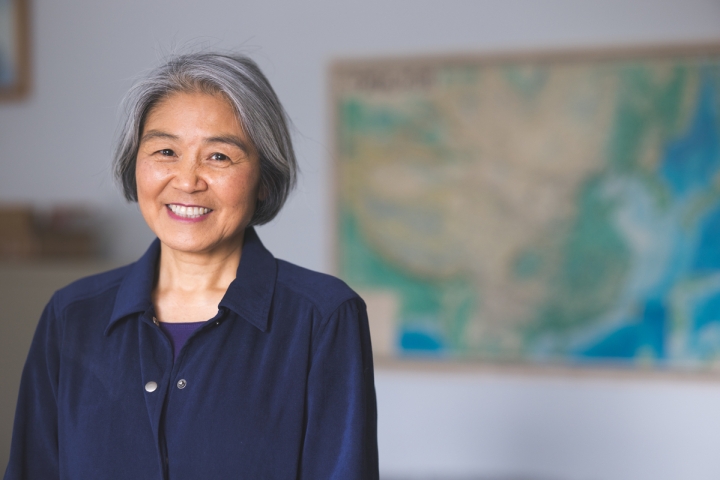Xiahong Feng, Frederick Hall Professor of Mineralogy and Geology, has been named a Fellow of the American Association for the Advancement of Science for her contributions to the field of geochemistry.
The distinction is among the highest in the scientific community and honors scientists, engineers, and innovators whose efforts on behalf of science and its applications are scientifically or socially distinguished.
Feng, a professor of earth sciences, who is among 502 scientists, engineers and innovators who have been elected 2023 AAAS Fellows, uses stable isotopes—two or more species of chemical elements such as oxygen, hydrogen, carbon, and nitrogen—to evaluate past and present climates and other natural processes.
Stable isotopes, which occur naturally and do not decay through radioactivity, are a unique tool because they act like a record of the global environment. The relative presence and variation of different isotopes in water, air, rocks, tree rings, and soils can be used to identify the sample’s origins and trace the history of climactic and environmental changes as well as the mechanisms that drive them.
“We are excited about the news; it is a well-deserved honor for Professor Feng,” says Meredith Kelly, chair of the earth sciences department. “She has had a long and productive career at Dartmouth studying stable isotope geochemistry. Her research has led to valuable new insights into the stable isotope systematics of soil organic matter, hydrologic systems, carbon cycling, and atmospheric water transport.”
Feng, who joined the Dartmouth faculty in 1994, was introduced to stable isotope geochemistry as a graduate student at Peking University.
Early in her career, Feng applied the technique to analyze minerals found in sedimentary rock and tree rings. “Trees, which use water to synthesize cellulose, are like a historical register,” says Feng. “The isotope ratios of hydrogen and oxygen act like signatures of global precipitation and how it has changed over time.”
She also studied carbon isotopes in tree rings and organic matter in soils to understand the evolution of the carbon cycle, the process that moves carbon between the atmosphere, land, and ocean and is crucial to sustaining life on earth.
More recently, Feng has been involved in projects that measure oxygen and hydrogen isotopic compositions in precipitation across the Arctic to gauge the future impact of climate change as well as how ice cores are used to interpret climate change in the past.
The relative abundance of the heavier oxygen and hydrogen isotopes in precipitation is telltale of the source of moisture, whether it was picked up from oceans closer to the equator or the Poles, the trajectory of the vapor’s movement, and how much of it condensed before reaching a specific location.
This allows researchers to ask questions about how precipitation will vary as warming temperatures cause sea ice to melt. As sea ice decreases, the sea surface is opened up for evaporation, increasing precipitation. Studies like these offer a window into climate scenarios in the future as temperatures rise globally.
In addition to maintaining a state-of-the-art stable isotope laboratory, Feng has conducted fieldwork around the world including locations in North America, Asia, and the Arctic, and mentored over 20 graduate students and numerous undergraduate students, says Kelly. She has also been a leader in advancing diversity, equity, inclusivity, and belonging initiatives in the Department of Earth Sciences.
“From her work on tree rings, to soils, to sea ice in the Arctic, Professor Feng’s research has led to a deeper understanding of environmental and climate change using quantitative methods and insightful analysis,” says Jane Lipson, associate dean for the sciences. “I am truly delighted at this appropriate recognition of her impact on the field of geochemistry.”

